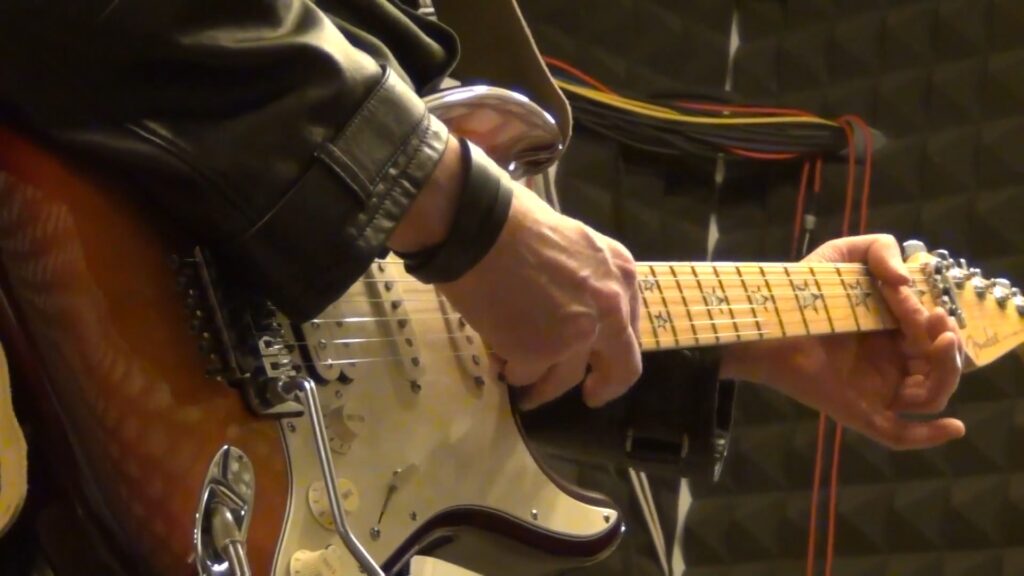Tablature, or “tab,” is a popular way for guitarists to notate music. Unlike traditional sheet music, which shows the notes and rhythms of a song, tablature uses a series of numbers and symbols to represent the strings and frets on the guitar. While it may seem intimidating at first, learning how to read guitar tablature is an essential skill for any guitarist. In this beginner’s guide, we’ll cover the basics of reading tab and provide some helpful tips to get you started.

Understanding Tablature Symbols
Before we dive into how to read tablature, let’s first go over some common symbols you’ll encounter:
- Numbers: These represent the frets on the guitar. For example, “3” means to play the note on the third fret of the indicated string.
- Lines: These represent the strings on the guitar. The top line represents the thinnest string (high E), while the bottom line represents the thickest string (low E).
- X: This means to mute the string by not playing it.
- O: This means to play the open string.
- /: This means to slide up to the indicated fret.
- : This means to slide down to the indicated fret.
- h: This means to hammer-on to the indicated fret.
- p: This means to pull-off to the indicated fret.
- ~: This means to vibrato (wiggle) the string while holding the indicated fret.
Reading Tablature
To read tablature, simply look at the numbers and symbols on the lines and play the corresponding notes on your guitar. Here’s an example:
e|---------------------------0-3-5-----------------------------------------|
B|----------------------3-5-------------------------------------------------|
G|-----------------2-4-------------------------------------------------------|
D|------------0-2-3----------------------------------------------------------|
A|-------0-2-----------------------------------------------------------------|
E|--0-3-----------------------------------------------------------------------|
This tab represents the opening riff of “Smoke on the Water” by Deep Purple. The top line represents the high E string, while the bottom line represents the low E string. The numbers on each line indicate which fret to play, while the dashes represent a rest or pause.
So, to play the riff, you would play the open low E string, then play the third fret on the low E string, then the fifth fret on the low E string, and so on. You would continue to play the notes in the order indicated until the end of the tab.
Tips for Reading Tablature
- Take it slow: Start with simple tabs and work your way up to more complex pieces. Reading tablature is a skill that takes time to develop, so be patient with yourself.
- Listen to the song: Tablature can be helpful, but it’s not a substitute for actually hearing the music. Listen to the song you’re learning and try to play along.
- Pay attention to rhythm: While tablature doesn’t show the exact rhythm of the music, it does give you a general idea of when to play each note. Make sure to count the beats and rests in the music and play accordingly.
- Use a metronome: A metronome is a device that produces a steady beat, which can help you stay on track with the rhythm of the music.
- Practice regularly: The more you practice reading tablature, the easier it will become. Try to set aside time each day to work on your skills.
Once you have become familiar with the basic elements of guitar tablature, the next step is to learn how to read more complex tablature. This may include bends, slides, hammer-ons, pull-offs, vibrato, and more.
Bends are indicated in tablature by a curved arrow pointing upwards. This symbol represents the action of bending the string upwards, which raises the pitch of the note. The number next to the arrow indicates the degree to which the string should be bent. For example, a “2” above the arrow indicates a whole step bend, while a “1/2” indicates a half step bend.
Slides are indicated by a line connecting two notes. This symbol represents sliding the finger up or down the string to reach the next note. A slide up is represented by a line going upwards, while a slide down is represented by a line going downwards.
Hammer-ons and pull-offs are techniques used to play legato, or smooth, connected notes without plucking the string again. A hammer-on is indicated by a “h” between two notes. This symbol represents hammering the finger down on the string to produce the next note. A pull-off is indicated by a “p” between two notes. This symbol represents pulling the finger off the string to produce the next note.
Vibrato is a technique used to create a slight variation in pitch to add expression to a note. In tablature, vibrato is indicated by a squiggly line above the note. This symbol represents shaking the finger back and forth on the fret to create the vibrato effect.
As you continue to practice reading guitar tablature, it’s important to keep in mind that it is just one tool in your musical toolkit. While it can be a helpful way to learn new songs and practice playing, it should not be the only way you learn to play guitar. It’s important to also learn music theory, proper technique, and to practice playing by ear.
In addition to practicing your guitar skills, it’s also important to take care of your instrument. This includes regularly changing your strings, keeping your guitar clean and properly stored, and taking it to a professional for any necessary repairs or adjustments.
Overall, reading guitar tablature is an essential skill for any beginner guitarist. With practice and patience, you can quickly become proficient in reading and playing guitar tablature, allowing you to learn new songs and improve your playing skills. Remember to also focus on proper technique, music theory, and taking care of your instrument to ensure a lifetime of enjoyable guitar playing.